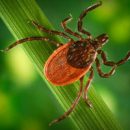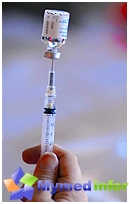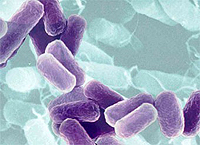How the staphylococcus infection is manifested in children? What are the ways of infection of children? How diagnosed and treat staphylococcal infection in children? Answers to these questions you will find in the article.
Content
Staphylococci (from Greek. Slohyle - «bunch» and Coccus - «globular») under the microscope are similar to
Grape clusters. In nature, there are many representatives of the species of Staphylococcus, of which only three are able to cause diseases in humans. Golden staphylococcus is most dangerous, which is a conditionally pathogenic microorganism (causing a disease with a decrease in immunity).
These bacteria are widespread in the environment. They can be found on household items, in the air, on plants. Staphylococcis are able to persist in milk and dairy products. Staphylococci can grow, producing special substances - toxins and enzymes.
Ways of infection Staphilococcus
In the norm of staphylococci dwell on the skin of a person, as well as on the mucous membrane of the oral cavity, pharynx and nose. Other representatives of normal microflora restrain their further
Spread. In healthy people, the pathogenic on the microbes is backed by immune
answer and active antibody production. Staphilococcus begins «raise», When the body is ne
can give him a decent story. These bacteria are the greatest danger for premature and
Related kids. In addition, the degree of degree for the development of an infectious process
pathogenicity of microorganism. In some cases, staphylococcal infection develops when other types of microorganisms constituting the normal microflora are depressed by the use of antibiotics that do not act on Staphylococcus.
Golden Staphylococcus causes the whole range of purulent diseases up to sepsis - blood infection, as well as toxic syndromes - hitting bacterial toxins into the blood. Infection occurs more often by contact path (through legends, lingerie, mother and staff) and through breast milk in the presence of cracks of nipples, mastitis. Child infection is also possible in the intrauterine period and during childbirth. When they say that staphylococcus found in the maternity hospital, it is meant that the microbes are found in washes from walls and furniture or hands of medical personnel.
Since the development of the painting of the disease is associated with the level of immunity of a particular person, none of the forms of onePhilococcal infection is not considered to be acute.
Staphylococcus infection
Children of the first year of life of the disease caused by staphylococci can be divided into two large groups: local purulent-inflammatory processes and generalized infection, or sepsis. These microorganisms are capable of calling conjunctivitis, ommopalite (inflammation of the area of the umbilical ring), lesion of the skin and soft tissues (pseudofurunculosis, vesiculopustuez, pemphigus, or bubble of newborns, «Skin syndrome», Abscesses, phlegmon), enterocolit (inflammation of the thin and large intestines).
«Business card» Any staphylococcal damage is the brightness of the symptoms of the disease.
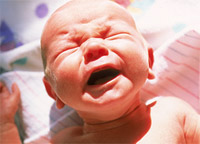
Staphylococcal conjunctivitis is characterized by a pronounced edema of the age, moderate photophobia,
abundant purulent separated from the eyes.
Ommophalit - inflammation of the umbilical wound caused by staphylococcus - is also accompanied by pronounced
Elevation of the umbilical rings, redness of the fabrics, moderate or abundant purulent separated from the wound.
It is often necessary to observe redness, ascending a strip towards the sternum in the course of the umbilical vein, which indicates the involvement of the veins in the inflammatory process and distribute infection on it. When palpation, the doctor will detect the seal and thickening of the veins in the form of a harness.
Pseudofurunculosis of newborns is inflammation of the sweat glands (in contrast to true furunculese, which is inflammation of the sebaceous glands) caused by staphylococcal. The disease is characterized by the appearance of compacted blushing nodules - mainly in the folds of the skin, where the greater number of sweat glands is located. In the future, these nodules are caught up.
Development of Vesikophulopez (literally translated as «Bubble suppuration») is associated with the development
Some strains of Staphylococcal exfoliative, causing the peeling of the skin epithelium with
By forming bubbles. Bubbles of different sizes with muddy content appear on the skin. They are easy
burst leaving a damaged surface that is quickly covered with a crust. If defeat
The skin is generalized (the process affects the entire surface of the skin), they say about pemphigus, or bubble, newborns. In this disease, bubbles usually apply to the back, belly, internal surfaces of the limbs. Sometimes a bubble flows in a severe malignant form of exfoliative dermatitis (ritter disease), also known as «Skin syndrome», at which the lunch of the epithelium occurs by large plates, leaving huge nude surfaces. Having obtained to severe intoxication and disorders of the functions of the body, exfoliative dermatitis is often complicated by the development of sepsis. Abscess - an affectionant, accompanied by superficial redness and sealing of deep layers of skin with the formation of a purulent cavity in the center.
Phlegmon - purulent inflammation of subcutaneous fatty fiber, which is often accompanied by necrosis
(sacrifice) skin over it. It often occurs when an overly tight swaddling causes necrosis of a piece of fatty fiber, and the bacteria penetrate the donerBlood cloth with blood flow.
In addition, staphylococci can cause purulent mastitis (there is mainly against the background of physiological mastopathy - the natural increase in the mammary glands in the first week of life of the baby), paraprojectite (purulent inflammation of fatty fiber in the anus area).
With any of these processes, local symptoms may be accompanied by a common violation
conditions, increasing body temperature. The child does not add enough in weight, in general analysis
Blood appear signs of inflammatory response.
Enterocolitis primarily manifests itself. It is clearly visible «handwriting» staphylococcus, watery chair, abundant up to 8-10 times a day with admixture of mucus, sometimes with blood. It quickly causes the development of diameters, stubborn and often heavy. The disease can begin suddenly - with pain in the stomach, vomiting, diarrhea at low temperature. Chalch character is the same.
Sepsis - a common form of a bacterial infection flowing on the background of immunodeficiency when
The body does not have the ability to limit defeat and neutralize the pathogen. For development
Sepsis is of great importance to the degree of microbial colonization (T. E. The number of came
microorganisms), which depends on the nature and duration of childbirth, objective, the quality of care for the newborn and the state of the sanitary and epidemic regime in the institution.
In the overwhelming majority, the penetration of bacteria occurs during childbirth or in
postpartum period (intrauterine seps - phenomenon, fortunately, extremely rare; but in case
It usually has a lightning current). Entrance gates of infection can serve
leather, and mucous membranes, and respiratory organs, and gastrointestinal flow, but in 60% of all cases primary
Septic focus is located in the umbilical wound. Further distribution of infection occurs with
blood. Severity of general manifestationsit does not correspond to the insignificance of local changes, and
Local inflammation is not accompanied by improving the general condition.
Two clinical forms of sepsis - septicopemia, which is characterized by the development of purulent foci (metastases) in various organs and tissues, and septicemia - without purulent metastases. During the septicemia, the presenter is the picture of infectious toxicosis: the general condition is noticeably suffering, the initial concern is replaced by lethargy, the appetite disappears, frequent joins appear, sometimes with an admixture of bile, unstable stool, flatulence, temperature reaction (decrease or temperature increase), sweeping syndrome, pallor, and Then gray coloring and marbling of skin, muscle hypotension, changes in the organs of organs. Septicemia may complicate the addition of pneumonia, deterioration of blood coagulation and hemorrhage into the skin, mucous and internal organs.
For septicopemia, in addition to the described changes in the general condition, the development of purulent foci in any organs is characterized. Abscesses may develop in lungs, liver, kidneys, osteomyelitis (inflammation, located in the bone marrow, with the involvement of bone tissues and nearby joints), purulent mastitis - inflammation of the breast, paraporates - inflammation of the fiber around the rectum, meningitis - inflammation of the brain shells.
Diagnosis of staphylococcal infection
The diagnosis of staphylococcal infection includes several methods.
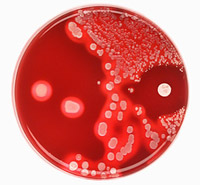
The most widely conducted crops of the test material (blood, pus, feces, maternal milk and t. D.) on special nutrient media, and then examine the grown colony of microbes, including under a microscope. This method allows not only to determine the type of microorganism, but also to explore
Microbial sensitivity to antibiotics. It should be noted that this method requires a certain
time (5-7 days), according to testimony Treatment is prescribed from the first days of the disease with the antibiotics of a wide range of action. In addition, the phasotypes of the selected staphylococci often spend - identifying sensitivity to certain viruses - phages. On the one hand, it allows you to answer the question about the source of infection, on the other - to prescribe the drug of the corresponding phage for treatment.
Less indicative of serological examination of blood and polymerase chain reaction method (PCR).
Let's say a few words about sowing maternal milk on flora. The need for this occurs when
Suspicious of the development of the infectious process at the kid, when to establish an infection source.
There may be chairs, skin inflammatory processes, as well as other situations,
When it can be assumed that the source of infection is breast milk. Before jamming milk for analysis, hands and chest glands are carefully processed, then 70% alcohol - nipples and near. Several milliliters of milk joined, and only then take a fence to study in sterile test tubes.
Treatment of staphylococcal infection
With staphylococcal infection, local treatment of inflammatory foci is required,
Violation of the general condition arises the need to appoint antibacterial drugs. From
local antibacterial drugs against staphylococci are effective synthesis
Emulsion, oleandomycinic ointment, baccake. For system effect in staphylococcal infection
Apply antibiotics from groups of semi-synthetic penicilines and cephalosporins. In addition, special preparations are used in which the concentration of antistaphilococcal antibodies is high. These drugs include anti-staphylococcal immunoglobulin, anti-staphylococcal plasma. These properties have preparations of human immunoglobulin, but they are represented not only anti-staphylococcal antibodies, but also antibodies against many other infections. Pentaglobin, octagam can be brought as an example. New word in the treatment of localized forms of staphylococcal infection is the use of phages. The advantage of these drugs is that they do not act on other microbes and cells of the body, therefore, do not cause the development of dysbiosis and other complications. They are not used in the treatment of severe and generalized forms of infection, since the effect of their application is developing on average after 48 hours.
For the treatment of conjunctivitis, wash the eye washing with a weak solution of potassium permanganate
(«Manganese») with the subsequent instillation of a 20-30% albucid solution (sodium sodium sodium) or
Special eye drops with antibiotic solutions. These procedures are carried out at least 3-5 times in
day.
The treatment of omphalitis consists in the daily processing of the umbilical wound with a 3% solution of hydrogen peroxide
followed by drying 70% alcohol and lubrication 1 - 2% diamond solution
greens or 3-5% potassium permanganate solution. With significant infiltration (sealing) of the tissue impose a bandage with the ointment of Vishnevsky, with purulent discharges (when confirming the staphylococcal nature of inflammation) - ointment with antibiotics. In case of violation of the generalChildren and the hazard of generatization of infection use antibiotic injections.
With pseudofurunculosis, antibacterial treatment and local therapy (0.1% solution
Permanganate potassium, antibacterial ointment).
Veskophopustuez usually does not require treatment with antibiotics - enough removal of bubbles, toilet skin with soap, local application of antiseptics (0.1% solution of potassium permanganate, 0.02% furaciline solution), antibacterial ointi.
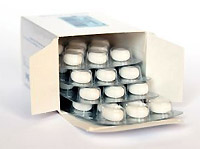
The generalized form - bubble of newborns - requires intensive antibacterial treatment, the use of anti-staphylococcal immunoglobulin.
Exfoliative dermatitis is subject to antibiotic treatment, anti-staphylococcal
Immunoglobulin or antistaphococcal plasma. In this case, the disease is opened by bubbles,
Toilet skin with 0.1% potassium permanganate solution, its constant moisturizing with saline,
Use antibacterial ointments.
The treatment of abscesses and phlegmon primarily lies in the opening of the purulent cavity and the provision of drainage. In addition, these diseases are usually prescribed antibiotics.
With staphylococcal enterocolitis, the destination of antibacterial drugs is determined by weight
Patient states. As with any form of the disease, it is effective to appoint the appropriate phages. In the case of food toxicoinfection, the hospitalization will most likely need. At the beginning
Diseases good effect can give washing the stomach. Further, special attention should be paid to
Rehydration (replenishing liquid lost with diarrhea and vomiting). With a subacute course of enterocolitis, when the general condition suffers from little, there is no vomit and clinical manifestations are reduced to the disorder of the chair, the task is to restore the normal microflora of the gastrointestinal tract. For this, natural feeding (if necessary, the mother is treated), sometimes prescribe drugs that contribute to the normalization of microflora.
Treatment of sepsis required to be comprehensive. It is directed only to fight
pathogen, but also to stimulate and restore the protective forces of the body. In this case, the child
Antibiotics are introduced (most often intravenous), anti-staphylococcal immunoglobulin, anti-staple plasma and drugs of human immunoglobulin; Plasma transfusions and straight blood transfusions.In addition, the correction of broken functions of the body is corrected and symptomatic treatment. It is very important to establishing breastfeeding, and if it is impossible, the use of unpasteurized breast milk, written immediately before feeding.
With a massive disgrace of milk staphylococcal - in the amount of more than 250 columns of forming units
Bacteria in 1 ml of milk, as well as in the case of clinical manifestations of infection in the mother (mastitis, endometritis, tonsillitis, etc.), it is necessary to temporarily translate the child to artificial feeding. With a non-massive seeding, feeding continues with aispically pasteurized breast milk.
Prevention of staphylococcal infection
The prevention of staphylococcal infection provides for the timely identification and treatment of foci of chronic infection in pregnant women, the prevention of acute infections, creating conditions for the child born on time and healthy, properly conducting childbirth, compliance with anti-epidemic events and personal hygiene rules, natural feeding, proper care For newborns.


